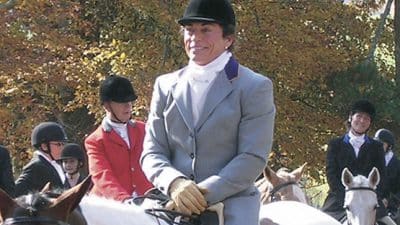
Trees planted in rehabilitated soil have as much as 84 percent greater canopy than those in untreated soil, according to Susan Day, associate professor of urban forestry in the College of Natural Resources and Environment. The research by Day and colleagues appears online ahead of print in Urban Forestry & Urban Greening.
Past work showed that their method, named “Soil Profile Rebuilding,” decreases soil compaction, increases carbon sequestration, and increases the rate at which water moves through the soil, thereby improving storm-water capture.
“City soils are much maligned, and with good reason,” said Day, who has a joint appointment in horticulture in the College of Agriculture and Life Sciences. “City soils are stripped and compacted and mixed and layered until they have little in common with their less-disturbed cousins in agricultural and forested lands.”
The Soil Profile Rebuilding method uses compost and a special subsoiling technique adapted for tight urban spaces to create pathways through the soil for root and water penetration. A backhoe with a tined bucket is used to break up the compacted soil and incorporate compost to a depth of two feet. Then four inches of topsoil are applied and rototilled to a depth of six to eight inches, followed by planting trees or shrubs whose roots help the soil continue to develop.
Unlike many previous approaches to alleviating soil compaction, the effects of Soil Profile Rebuilding persist “because the technique doesn’t just break up the soil physically; it also affects biological activity in the soil,” Day explained. It is a useful tool for designers seeking SITES® (Sustainable Sites Initiative) accreditation from the U.S. Green Building Council.
The rehabilitation process was developed by Day, faculty colleagues, and graduate students in both colleges over the course of seven years of research at Virginia Tech and in Arlington County, Virginia, in partnership with Vincent Verweij, Arlington County’s urban forester.
The researchers evaluated five tree species — red maple, swamp white oak, bur oak, elm, and cherry — over six years in response to Soil Profile Rebuilding in comparison with typical development practices and undisturbed agricultural soil at a long-term experimental plot area.
They measured tree growth and mortality of three additional tree species — ginkgo, scarlet oak, and katsura — one year after planting with and without Soil Profile Rebuilding in 25 plots along major thoroughfares in Arlington. Soil rebuilding resulted in 77 percent greater trunk cross-section area growth after one year.
“Municipalities and developers are often faced with a choice between wholesale replacement of existing soil or leaving soil untreated, resulting in frequent plant replacements, decreased biodiversity, and limited ability of the landscape to handle rainfall and reduce runoff,” Day said. “Soil Profile Rebuilding gives them another option that is considerably more cost effective and sustainable than soil replacement.”
Faculty co-authors on the research are W. Lee Daniels, the Thomas B. Hutcheson Jr. Professor of Crop and Soil Environmental Sciences, and J. Roger Harris, professor of horticulture, both in the College of Agriculture and Life Sciences. The three students authors have since graduated from Virginia Tech: Rachel Layman (lead author) earned a master’s in horticulture in 2012, Yujuan Chen earned a doctorate in forestry in 2013, and David Mitchell earned a master’s in forestry in 2014.
This research is funded in part by Virginia Tech’s Institute for Critical Technology and Applied Science, the Tree Research and Education Endowment Fund, and the McIntire-Stennis Program of the U.S. Department of Agriculture’s National Institute of Food and Agriculture.










